Bluegills are prone to overpopulation. This is accepted knowledge among many anglers.
If you don’t catch and keep a lot of bluegills out of a pond, you’ll often hear a fisherman say, the bluegills will overrun the place. You’ll soon have a pond full of runty, stunted fish.
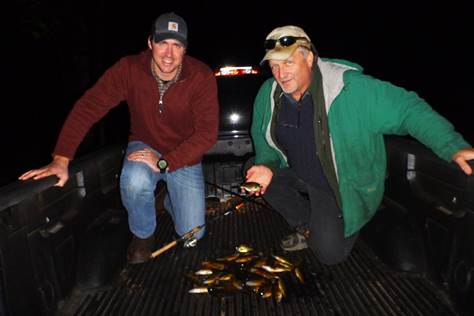
This is why the bag limits for bluegills are typically very liberal – it is not unusual to be able to keep 25 fish a day. It’s the angler’s duty to catch and eat as many as possible – keep the herd in check, if you will.
It sounds good, but current research suggests it’s wrong.
In fact, research conducted by Andrew Rypel, research biologist with the Wisconsin Department of Natural Resources, suggests the opposite: that liberal harvest limits on bluegills actually decreases the size of fish.
“Fish Here Aren’t As Big As They Used to Be”
Bluegills are often the first fish many anglers encounter (including me). They are common in farm and urban ponds. They’re the fish kids catch with a Mickey Mouse rod, a bobber and worms.
In the spring, many anglers target them on their spawning beds, where the biggest males are often easy to catch (see yesterday’s blog for the full details on this spectacle).
Bluegills are also popular because they’re tasty. Anglers call them and similar-sized species – crappies, perch, other sunfish – panfish. They’re the perfect size to fit in a frying pan.
Rypel and his colleagues in Wisconsin noticed something over the years: Anglers reported decreasing size of bluegills and other panfish. Of course, conventional angling wisdom would suggest the solution to this would be to harvest even more bluegills. After all, decreasing size is a sign of overpopulation.
Research tells a different story.
Rypel analyzed size trends going back to the 1940’s, and found that bluegills (and other panfish species) steadily declined in size over a 70-year period.
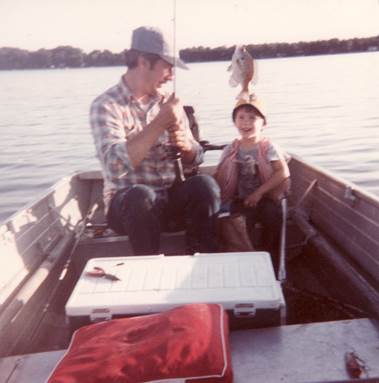
“The regulations are relatively liberal,” he says. “I thought one possibility might be that we were fishing them too hard. As we looked at the data, we found that evidence of bluegills becoming stunted because they were overpopulated was not as common as previously thought.”
Fishing pressure, particularly on spawning beds where bluegills are most vulnerable, can be intense. And that pressure may be decreasing the size of fish.
In response to the trend, the Wisconsin DNR reduced the bag limit to 10 fish on 10 lakes as a test. Researchers, including Rypel, analyzed fish size before and after the regulation.
They found that fish size increased on average a half-inch on maximum size and .8 inch on mean size.
That may not sound like much, but consider that a typical bluegill is six or seven inches, and a really large one is ten inches.
Rypel published the findings in the North American Journal of Fisheries Management.
A New Experiment in Bluegill Management
The next phase of the project is to implement new management strategies on 100 Wisconsin lakes. One third will have a reduced limit of 10, one third will have a reduced limit of 5, and one third will have a reduced bag limit only during the spawning season.
The management regimes will run for ten years. “We’re going to find out what different regulations can do for panfish size,” says Rypel.
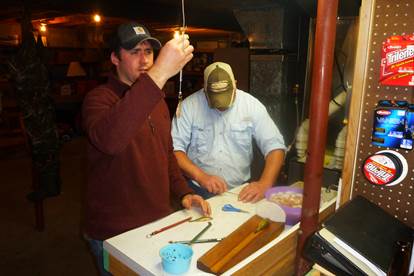
The good news is that bluegill size rebounds when fishing pressure decreases. A study by Rypel in collaboration with researchers at the University of Wisconsin-Milwaukee, School of Freshwater Sciences found that the reduction in size was not likely due to a shift in genetics, as has been shown to be the case in some other prominent studies on fishing pressure.
Anglers have, in general, been reluctant to embrace size limit reductions. Rypel points out that the limit reductions may actually result in more meat harvested. That may seem counterintuitive, but it’s true. “As bluegills get bigger in length, they get exponentially bigger in weight,” he says. “So if you catch a few larger bluegills, you often get more meat than if you caught a bunch of smaller ones.”
There is still a lot biologists don’t know about bluegills. New research will likely call for more changes in fishing regulation, but Rypel acknowledges that science is only one part of fisheries regulation.
“Regulations are a blunt instrument,” he says. “They cannot account for all aspects of fisheries management. If they get too complicated, they become much more difficult to enforce. We want regulations that are easy to understand and easy to enforce. There are trade-offs. In this case, reducing the bag limit could help the resource tremendously while still meeting the expectations of anglers.”
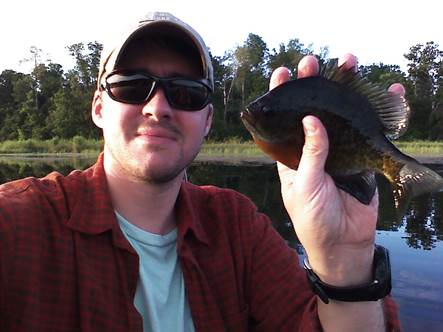
And while the bluegill may seem an unlikely symbol for global fisheries management, what Rypel says applies to large commercial fisheries as surely as it does the local farm pond. Regulations are only ever partly about science, and they can never fully account for the complexity of a fishery.
The key for resource managers is to use sound science to create regulations that work best – for fish and for people.
“Bluegills have the opportunity to get bigger with a relatively minor shift in fishing regulations,” says Rypel. “Our research is providing the evidence that it benefits anglers, too. The findings seem counter-intuitive to many anglers, who have long believed that smaller bluegills was a sign of overpopulation. But perhaps our long-term studies can convince them that lower bag limits can mean better fishing, and bigger panfish fillets for the fish fry.”
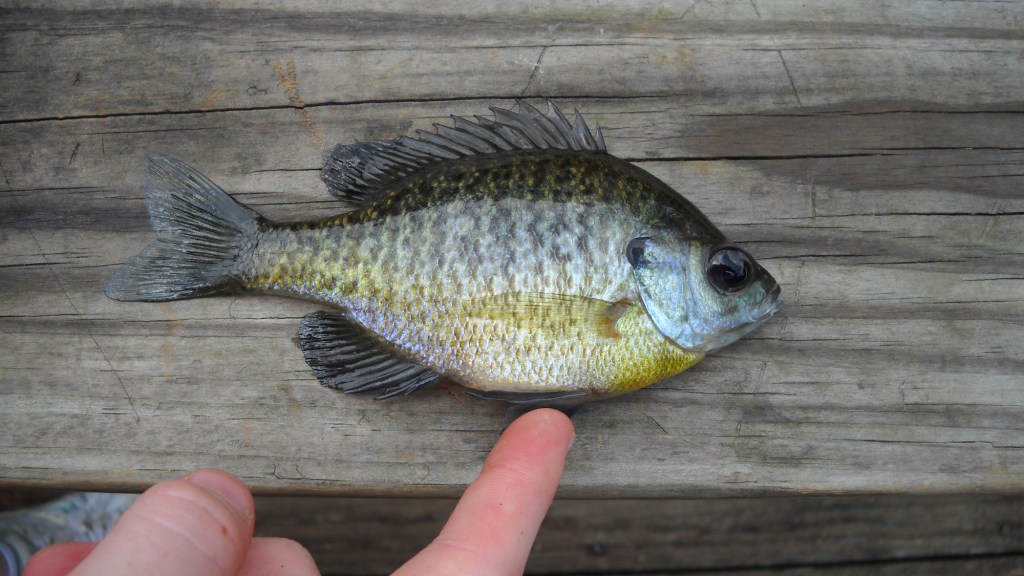



I live on a 1 and 1/2 acre retention pond. Unfortunately the fish are said not to be eatable. How every they are a blast to catch. The first year I caught mostly 5 to 6.5 inch bluegill. This year the seem to be getting smaller 3 to five inches. The first year we caught catfish and largemouth bass ranging from 2 pound to one reaching 5 pounds. The biggest this year has been 2.5 pound largemouth and a 3 pound catfish. I am l;ooking to see if there is anything I can do to increase size and number of catches.
I also grew up thinking that harvesting more bluegills from a pond or a lake would prevent it from being full of stunted bluegills. I would love to see daily catch limits reduced here in Georgia. I know this will not set will with many anglers here, but it has been proven in both Wisconsin, and Minnesota that the reduced daily limits are making for better overall bluegill fishing.
I have a 3 yr old pond which was stocked 2 years ago. (Largemouth, red ear, hybrid, and regular bluegills, and channel cats. I have seen bluegill beds the last two years but no sign of beds this years with I believe a successful spawn. I have not kept any fish yet to eat. My question is: if a pond is overpopulated will the bluegills not spawn? Should I start keeping the larger gills.
Do you know why lower limits produce bigger fish?
These findings would not hold true on private ponds that are being fed regularly. This changes many variables – abundant food supply would likely increase spawning, increase other bait fish numbers and therefore without a healthy amount of predator fish, overpopulation is likely.
Carefully observe the winners, don’t always pay attention to the losers
I would ask Bob Lusk at the pond boss I do not agree with all of your findings. I have been involved in pond management for over 30 years manegent is key to a healthy a healthy fisheries. One must first understand the life cycle of all the fish in your lake
Thanks for your comment. This ongoing research was conducted in wild lakes in Wisconsin, most open to public fishing. Obviously, there would be differences in a private pond. Many fisheries are in fact over-harvested. As far as bluegill lakes, if you had the choice between a lake that was heavily “managed” and one that has had no harvest over the past 25 years, you should pick the one with no harvest. Every time.
what is the silver substance along the inside backbone of bluegill?
Very well said, sounds very logical!
Thank you for looking at bluegill in northern lakes. Using recommendations developed for southern bluegill populations for management of northern lakes is not a good idea.